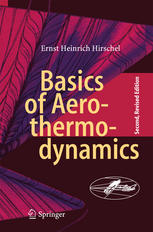

Most ebook files are in PDF format, so you can easily read them using various software such as Foxit Reader or directly on the Google Chrome browser.
Some ebook files are released by publishers in other formats such as .awz, .mobi, .epub, .fb2, etc. You may need to install specific software to read these formats on mobile/PC, such as Calibre.
Please read the tutorial at this link: https://ebookbell.com/faq
We offer FREE conversion to the popular formats you request; however, this may take some time. Therefore, right after payment, please email us, and we will try to provide the service as quickly as possible.
For some exceptional file formats or broken links (if any), please refrain from opening any disputes. Instead, email us first, and we will try to assist within a maximum of 6 hours.
EbookBell Team

4.8
74 reviewsThis successful book gives an introduction to the basics of aerothermodynamics, as applied in particular to winged re-entry vehicles and airbreathing hypersonic cruise and acceleration vehicles. The book gives a review of the issues of transport of momentum, energy and mass, real-gas effects as well as inviscid and viscous flow phenomena. In this second, revised edition the chapters with the classical topics of aerothermodynamics more or less were left untouched. The access to some single topics of practical interest was improved. Auxiliary chapters were put into an appendix. The recent successful flights of the X-43A and the X-51A indicate that the dawn of sustained airbreathing hypersonic flight now has arrived. This proves that the original approach of the book to put emphasis on viscous effects and the aerothermodynamics of radiation-cooled vehicle surfaces was timely. This second, revised edition even more accentuates these topics. A new, additional chapter treats examples of viscous thermal surface effects. Partly only very recently obtained experimental and numerical results show the complexity of such phenomena (dependence of boundary-layer stability, skin friction, boundary-layer thicknesses, and separation on the thermal state of the surface) and their importance for airbreathing hypersonic flight vehicles, but also for any other kind of hypersonic vehicle.